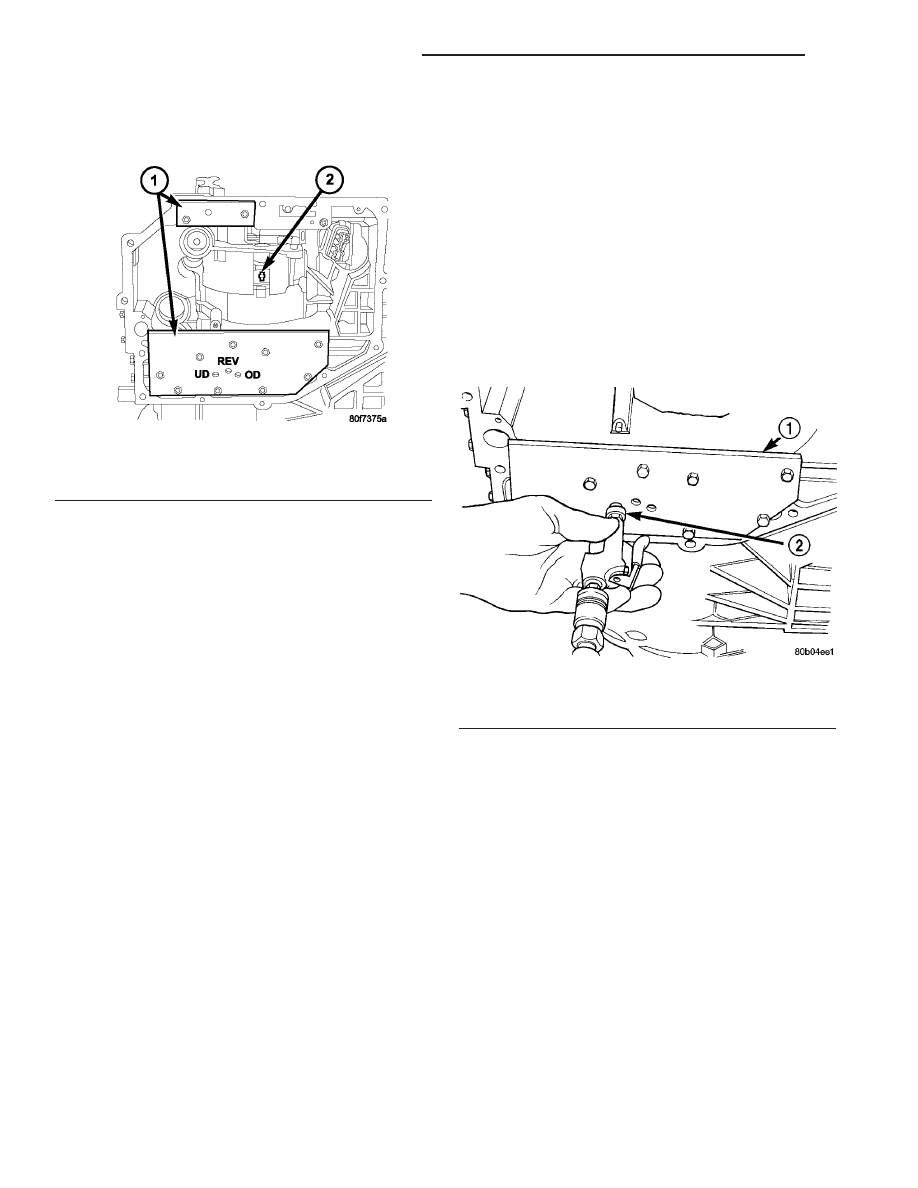Jeep Wrangler TJ. Manual - part 490

DIAGNOSIS AND TESTING - CLUTCH AIR
PRESSURE TESTS
Inoperative clutches can be located by substituting
air pressure for fluid pressure. The clutches may be
tested by applying air pressure to their respective
passages after the valve body has been removed. Use
Special Tool 6599-1 (1) and 6599-2 (1) to perform test
(Fig. 9).
To make air pressure tests, proceed as follows:
NOTE: The compressed air supply must be free of
all dirt and moisture. Use a pressure of 30 psi.
(1) Remove oil pan and valve body. (Refer to 21 -
TRANSMISSION/AUTOMATIC
-
42RLE/VALVE
BODY - REMOVAL)
(2) Apply air pressure to the holes in the special
tool (1), one at a time.
(3) Listen for the clutch to apply. It will give a
slight thud sound. If a large amount of air is heard
escaping, the transmission must be removed from
vehicle, disassembled and all seals inspected.
2/4 CLUTCH
Apply air pressure to the feed hole located on the
2/4 clutch retainer (2). Look in the area where the
2/4 piston contacts the first separator plate and
watch carefully for the 2/4 piston to move rearward.
The piston should return to its original position after
the air pressure is removed.
OVERDRIVE CLUTCH
Apply air pressure to the overdrive clutch apply
passage and watch for the push/pull piston to move
forward. The piston should return to its starting
position when the air pressure is removed.
REVERSE CLUTCH
Apply air pressure to the reverse clutch apply pas-
sage and watch for the push/pull piston to move rear-
ward. The piston should return to its starting
position when the air pressure is removed.
LOW/REVERSE CLUTCH
Apply air pressure to the low/reverse clutch feed
hole passage. Look in the area where the low/reverse
piston contacts the first separator plate. Watch care-
fully for the piston to move forward. The piston
should return to its original position after the air
pressure is removed.
UNDERDRIVE CLUTCH
Because this clutch piston cannot be seen, its oper-
ation is checked by function. Air pressure is applied
to the low/reverse or the 2/4 clutches. This locks the
output shaft. Use a piece of rubber hose wrapped
around the input shaft and a pair of clamp-on pliers
to turn the input shaft. Next apply air pressure (Fig.
10) to the underdrive clutch. The input shaft should
not rotate with hand torque. Release the air pressure
and confirm that the input shaft will rotate.
DIAGNOSIS AND TESTING - FLUID LEAKAGE
FLUID LEAKAGE - TORQUE CONVERTER HOUSING
AREA
When diagnosing converter housing fluid leaks,
three actions must be taken before repair:
(1) Verify proper transmission fluid level.
(2) Verify that the leak originates from the con-
verter housing area and is transmission fluid.
(3) Determine the true source of the leak.
Fig. 9 Air Pressure Test Plate
1 - AIR PRESSURE TEST PLATES
2 - 2/4 CLUTCH RETAINER HOLE
Fig. 10 Testing Underdrive Clutch
1 - AIR PRESSURE TEST PLATE 6599-1
2 - AIR NOZZLE
21 - 50
AUTOMATIC TRANSMISSION - 42RLE
TJ
AUTOMATIC TRANSMISSION - 42RLE (Continued)